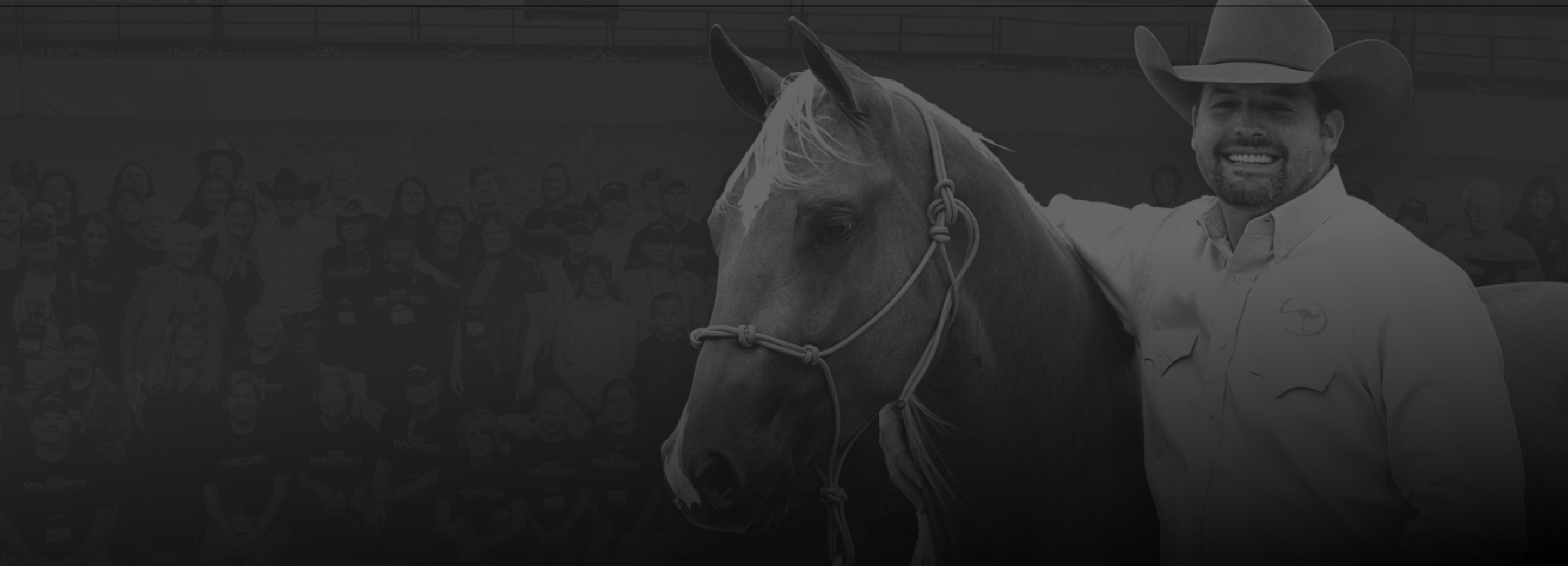For the past 20 years, Clinton Anderson from Downunder Horsemanship has devoted his life to creating the best training tools and videos to help bring his method to you. Join him on his weekly endeavors to tackle some of the most challenging situations with problem horses and problem owners. This week, we watch as Clinton answers a viewer question: What should you do with a hard-to-handle mustang?
Clinton starts this episode by clarifying an important piece of information that every horseman should know … whatever horses learn first, they learn best.
His viewer, Marissa, came to him with an issue about her mustang that she got from the BLM and had no prior handling. She said that two trainers had already tried to work with the horse, but neither could get anywhere. They were able to get the halter on him but couldn’t advance beyond that. Clinton states that what this really means is after getting the halter on the horse, the horse would do something wrong or react badly and the trainers would release the pressure. This is pretty normal, as wild mustangs are known to be spooky, jumpy and reactive. So, when you first catch them and get a halter on them, of course, they’re going to be hard to handle. But, if an experienced horseman works with them every day, a wild mustang can go from really reactive and scared to being a quiet, well-trained horse in no time—almost like you pressed a button and they’ve transformed. You just need to build up that trust and earn the horse’s respect. Once wild mustangs realize that you’re not going to hurt them, they get quiet and can become extremely nice horses to have on the trail or for recreation.
Clinton does specify that when mustangs are started correctly, they can get very quiet very quickly, but when they’re started badly or they learn bad habits, they can be hard to correct. You need to untrain those bad habits and replace them with good ones. Change the horse from using the reactive side of his brain to the thinking side. This can just take more time with mustangs because there’s usually a lot of tension when they’re first captured, and negative behaviors might be unknowingly reinforced. This makes it a bit more complicated to fix.
Now, if Marissa were to send her hard-to-handle mustang to Clinton, he says he would simply go back and act like the gelding’s never been started. He’d take the horse back into the roundpen, act like he never had a halter on him, and start from scratch. He’d put him through training every single day for 30 days, spending two-and-a-half hours a day with him. During the first few days, he might even work with him twice a day. He’d work him two-and-a-half hours in the morning and then two-and-a-half hours in the evening. He’d work with the horse for at least 30 days with no days off. You’re not going to fix any hard-to-handle horse with only a little bit of training by working with him a few days a week. These types of horses need serious training and dedication—almost like a boot camp. Then, after 60 days, most of these problems will likely disappear and your horse will be good, have learned to trust you and act respectively for the long run.
Remember, whatever horses learn first, they learn best. So, taking a horse like this mustang to a trainer who isn’t focused on putting a foundation on the horse and isn’t willing to consistently work with him is only going to cause more issues in the future. The foundation will stay with your horse for life, so even if he’s a bit older, the way you treat him during those first training sessions is essential. It will help you build a concrete foundation to come back to and continue building on. Now, Clinton isn’t saying that you can’t fix a hard-to-handle horse, but you do need to understand that you have your work cut out for you. Then you need to ask yourself if you have the skill set to handle it. If you don’t and you try, you might only end up causing more issues down the line. It’s okay to get help if you need it. It’s a much better idea than trying to train your horse yourself, doing it wrong, and teaching him even more bad habits.
To learn more about the Downunder Horsemanship training method, become a member of the No Worries Club, or get information on any of the products featured on our show, visit our homepage and download the Downunder Horsemanship app today!

Master Your horsemanship Skills
Like these tips? Join the No Worries Club and hone your skills with thousands of hours of Clinton’s easy, step-by-step method horse training videos.



